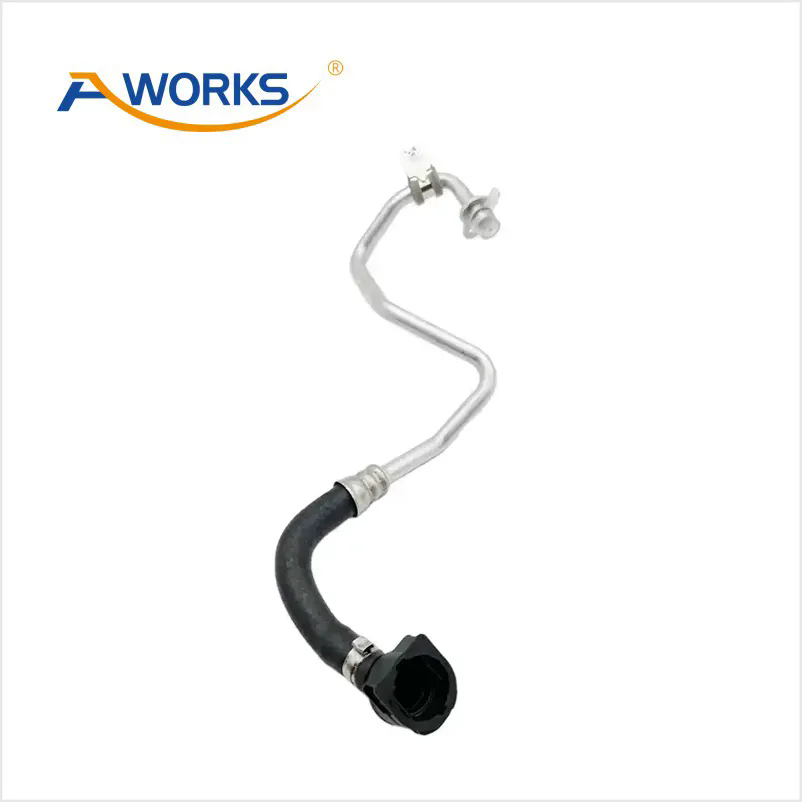The Essential Role of the Car Water Pipe in Your Vehicle's Cooling System
2024-08-28
When it comes to the smooth operation of your vehicle, the cooling system plays a critical role in maintaining the engine's temperature and preventing overheating. A key component of this system is the Car Water Pipe—a seemingly simple yet vital part that ensures the effective flow of coolant throughout the engine. Understanding the function, importance, and maintenance of the car water pipe can help you keep your vehicle running efficiently and avoid costly repairs.
What is a Car Water Pipe?
A car water pipe, also known as a coolant hose or radiator hose, is a flexible tube that carries coolant between the engine, radiator, and other components of the vehicle's cooling system. These pipes are typically made from durable, heat-resistant materials such as rubber or silicone, designed to withstand the high temperatures and pressure within the engine compartment.
Key Functions of the Car Water Pipe
1. Coolant Circulation: The primary function of the car water pipe is to facilitate the circulation of coolant throughout the engine. The coolant absorbs heat from the engine and then travels through the water pipe to the radiator, where it is cooled before being recirculated back into the engine. This continuous cycle helps maintain the engine at an optimal operating temperature.
2. Preventing Overheating: By ensuring the steady flow of coolant, the car water pipe plays a crucial role in preventing the engine from overheating. Overheating can lead to severe engine damage, including warped cylinder heads, blown gaskets, and even complete engine failure. The water pipe helps dissipate excess heat, protecting your engine from these potential hazards.
3. Maintaining Engine Efficiency: A well-functioning cooling system, supported by intact water pipes, helps maintain the engine's efficiency. When the engine runs at the correct temperature, it operates more efficiently, resulting in better fuel economy, reduced emissions, and overall improved performance.
Types of Car Water Pipes
1. Upper Radiator Hose: This pipe connects the top of the engine to the radiator's upper inlet. Hot coolant from the engine flows through the upper radiator hose into the radiator, where it is cooled by air passing through the radiator fins.
2. Lower Radiator Hose: The lower radiator hose connects the bottom of the radiator to the engine's water pump. Once the coolant is cooled in the radiator, it flows back into the engine through this hose to continue the cooling process.
3. Heater Hose: The heater hoses carry coolant to and from the heater core, a small radiator located inside the vehicle's cabin. The heater core uses the heat from the coolant to warm the air that is blown into the cabin by the vehicle's heating system.
Signs of a Failing Car Water Pipe
Like any automotive component, car water pipes can wear out over time. Here are some common signs that your car water pipe may need attention:
1. Visible Cracks or Leaks: Inspect the water pipes for any visible cracks, bulges, or leaks. If you notice any signs of wear, it's important to replace the pipe immediately to avoid coolant loss and engine overheating.
2. Coolant Leaks: If you notice a puddle of coolant under your vehicle, it could indicate a leaking water pipe. Coolant is usually green, orange, or pink in color, and has a sweet smell. Leaks can be caused by cracks in the pipe, loose clamps, or deteriorated connections.
3. Engine Overheating: If your engine temperature gauge is consistently running high, or if the temperature warning light comes on, it could be a sign of a coolant flow issue, potentially caused by a failing water pipe.
4. Low Coolant Levels: If you frequently need to top off your coolant, it could be due to a leak in the water pipe. A thorough inspection can help identify the source of the coolant loss.
Maintenance Tips for Car Water Pipes
To ensure your car water pipes are in good condition and prevent unexpected breakdowns, follow these maintenance tips:
1. Regular Inspections: Periodically check your car's water pipes for any signs of wear, cracks, or leaks. This is especially important before long trips or during seasonal changes when temperature extremes can put extra stress on the cooling system.
2. Replace Worn Pipes: If you notice any damage to the water pipes, replace them promptly. It's recommended to replace both the upper and lower radiator hoses simultaneously, as they tend to wear out at similar rates.
3. Check Coolant Levels: Regularly check your coolant levels and top off as needed. If you notice a drop in coolant levels without visible leaks, have your cooling system checked by a professional mechanic.
4. Use Quality Replacement Parts: When replacing water pipes, always use high-quality parts that are designed for your specific vehicle make and model. Inferior materials may not withstand the high temperatures and pressures of the cooling system, leading to premature failure.
Conclusion
The car water pipe may be a small component, but it plays a big role in the overall health and performance of your vehicle. By ensuring proper coolant circulation, preventing overheating, and maintaining engine efficiency, this essential part helps keep your car running smoothly. Regular inspections and timely replacements of worn water pipes can prevent costly repairs and extend the life of your vehicle's engine.
Whether you're a seasoned car enthusiast or just a regular driver, understanding the importance of the car water pipe and taking proactive steps to maintain it will help you avoid headaches on the road and keep your vehicle in top condition.



